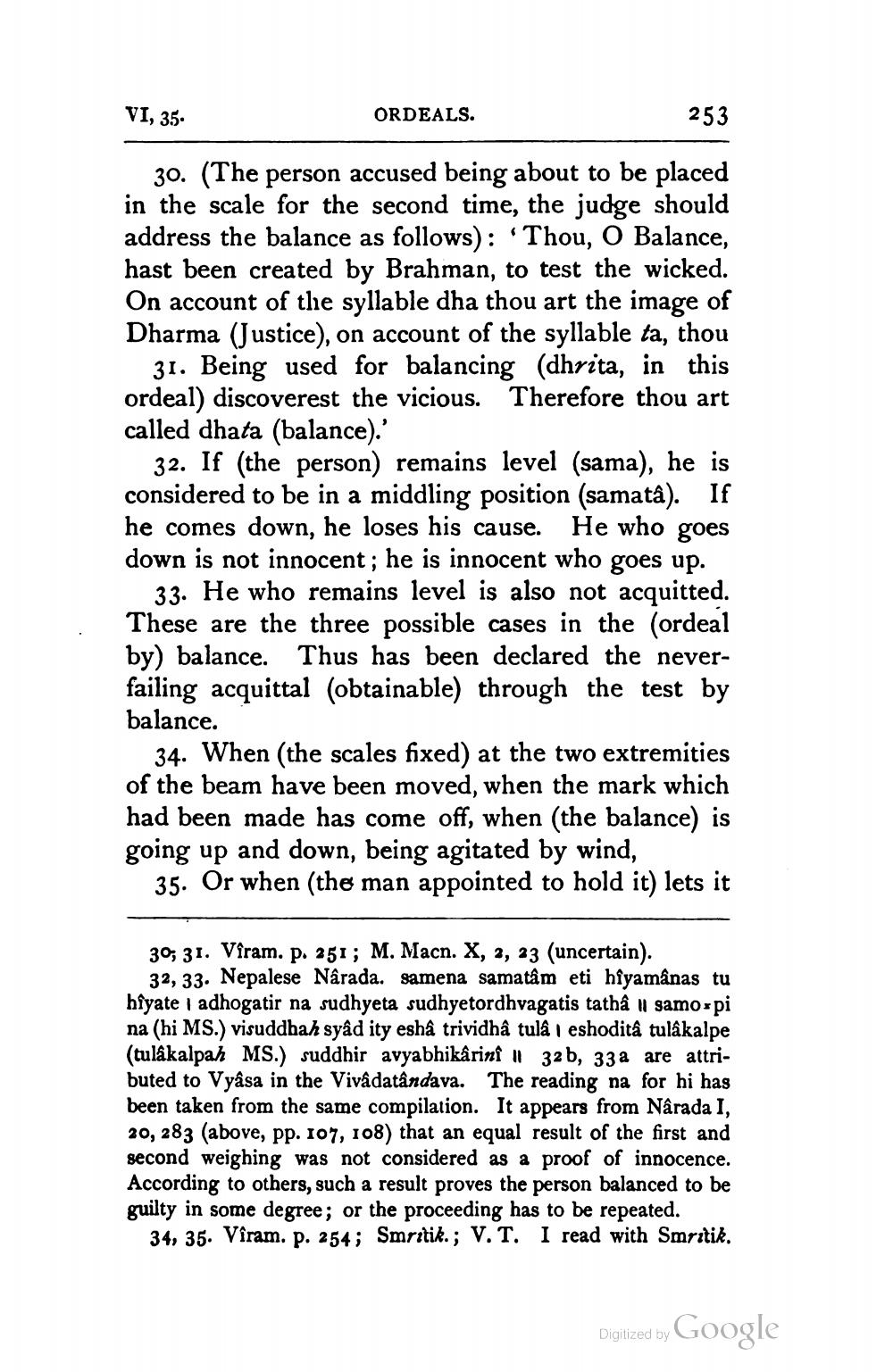________________
VI, 35.
ORDEALS.
253
30. (The person accused being about to be placed in the scale for the second time, the judge should address the balance as follows): "Thou, O Balance, hast been created by Brahman, to test the wicked. On account of the syllable dha thou art the image of Dharma (Justice), on account of the syllable ta, thou
31. Being used for balancing (dhrita, in this ordeal) discoverest the vicious. Therefore thou art called dhata (balance).'
32. If (the person) remains level (sama), he is considered to be in a middling position (samatâ). If he comes down, he loses his cause. He who goes down is not innocent; he is innocent who goes up.
33. He who remains level is also not acquitted. These are the three possible cases in the (ordeal by) balance. Thus has been declared the neverfailing acquittal (obtainable) through the test by balance.
34. When (the scales fixed) at the two extremities of the beam have been moved, when the mark which had been made has come off, when (the balance) is going up and down, being agitated by wind,
35. Or when (the man appointed to hold it) lets it
30, 31. Vîram. p. 251; M. Macn. X, 2, 23 (uncertain).
32, 33. Nepalese Narada. samena samatâm eti hiyamânas tu hiyate | adhogatir na sudhyeta sudhyetordhvagatis tatha li samo s pi na (hi MS.) visuddhah syâd ity eshâ trividhâ tulâ I eshodità tulákalpe (tulákalpah MS.) suddhir avyabhikârini il 32b, 33 a are attributed to Vyâsa in the Vivadatândava. The reading na for hi has been taken from the same compilation. It appears from Närada I, 20, 283 (above, pp. 107, 108) that an equal result of the first and second weighing was not considered as a proof of innocence. According to others, such a result proves the person balanced to be guilty in some degree; or the proceeding has to be repeated.
34, 35. Viram. P. 254; Smritik.; V.T. I read with Smritik.
Digitized by Google




